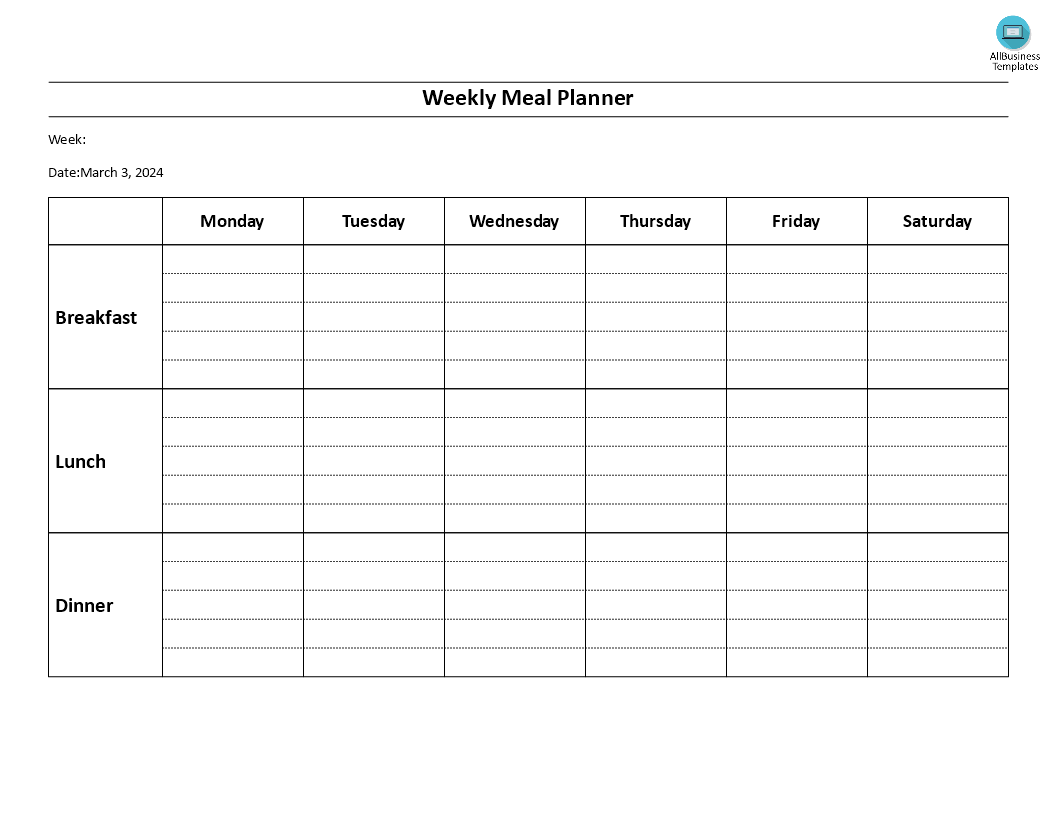Gezond weekmaalplan

Opslaan, invullen, afdrukken, klaar!
De beste manier om een Gezond weekmaalplan te maken? Check direct dit professionele Gezond weekmaalplan template!
Beschikbare bestandsformaten:
.doc- Gevalideerd door een professional
- 100% aanpasbaar
- Taal: English
- Digitale download (47 kB)
- Na betaling ontvangt u direct de download link
- We raden aan dit bestand op uw computer te downloaden.
Privé Gezondheid wekelijkse voedselplanner wekelijks dieetplan maandelijkse maaltijdplanner maaltijdplanning app maaltijden voor de week maaltijdplanning kalender eenvoudige maaltijden plannen gezond menuplan wekelijkse dinermenu voedselplanner gezonde maaltijden voor een week wekelijks gezond maaltijdplan wekelijkse menu ideeën wekelijkse dinerplanner wekelijkse maaltijden hoe maak ik een weekmenu plan
How do you make a healthy meal plan chart? Are you managing the catering or weekly catering menu for your company or family? Download this Healthy Weekly Meal Plan now if you are managing the food menu on behalf of your company or family!
A healthy weekly meal plan should include a balance of nutrient-dense foods from various food groups to ensure that you're getting a wide range of vitamins and minerals. Here's a sample plan, but keep in mind that individual nutritional needs may vary, and you may need to adjust portions based on factors like age, activity level, and specific dietary requirements.
What are the steps to take in writing a healthy meal plan chart?
Creating a healthy meal plan chart involves several steps to ensure that it is balanced, nutritionally sound, and suits individual preferences and dietary needs. Here's a step-by-step guide to help you write a healthy meal plan chart:
1. Assess Individual Needs:
- Consider age, sex, weight, activity level, and any specific dietary requirements or restrictions.
- Consult with a healthcare professional or registered dietitian for personalized advice.
2. Determine Meal Frequency:
- Decide on the number of meals and snacks per day based on individual preferences and needs (e.g., three main meals and two snacks).
3. Create a Template:
- Design a chart with columns for each day of the week and rows for meals and snacks.
- You can use a spreadsheet, a notebook, or a meal-planning app.
4. Include Food Groups:
- Incorporate a variety of food groups to ensure a balanced diet:
- Proteins (lean meats, poultry, fish, beans, tofu).
- Carbohydrates (whole grains, fruits, vegetables, legumes).
- Fats (healthy fats from avocados, nuts, seeds, and olive oil).
- Dairy or alternatives (milk, yogurt, or plant-based alternatives).
- Fruits and Vegetables (a colorful mix for vitamins and minerals).
5. Meal Planning:
- Plan meals with a combination of:
- Protein sources.
- Whole grains.
- Fruits and vegetables.
- Healthy fats.
6. Hydration:
- Include water as the primary beverage throughout the day.
- Limit sugary drinks and be mindful of caffeine intake.
7. Meal Timing:
- Spread meals and snacks evenly throughout the day to maintain energy levels.
- Consider individual preferences for meal timing (e.g., three larger meals vs. smaller, more frequent meals).
8. Portion Control:
- Be mindful of portion sizes to avoid overeating.
- Use smaller plates to help with portion control.
9. Adapt to Preferences:
- Consider personal preferences, cultural influences, and any specific dietary needs.
- Make adjustments based on taste preferences to increase adherence.
10. Plan Ahead:
- Set aside time for meal prep and plan meals for the week in advance.
- Prepare ingredients in bulk to save time during the week.
11. Record and Reflect:
- Keep a food diary or use a meal planning app to track meals and evaluate nutritional intake.
- Adjust the plan based on feedback and changes in nutritional needs.
12. Flexibility:
- Allow for flexibility and occasional treats to make the plan sustainable.
- Adjust the plan as needed based on changing circumstances or preferences.
13. Example Format:
- Use a simple table format with columns for days of the week and rows for meals and snacks.
- Include headings like "Time," "Meal/Snack," and "Food Options."
14. Monitor and Update:
- Regularly monitor your progress and how well the meal plan aligns with your goals.
- Update the meal plan as needed, especially if there are changes in lifestyle or dietary preferences.
Click directly on 'Open with Google Docs' or download our sample healthy weekly meal plan template as a Word template now to enhance efficiency! Your success in delivering a well-structured and effective weekly meal plan awaits.
DISCLAIMER
Hoewel all content met de grootste zorg is gecreërd, kan niets op deze pagina direct worden aangenomen als juridisch advies, noch is er een advocaat-client relatie van toepassing.
Laat een antwoord achter. Als u nog vragen of opmerkingen hebt, kunt u deze hieronder plaatsen.
